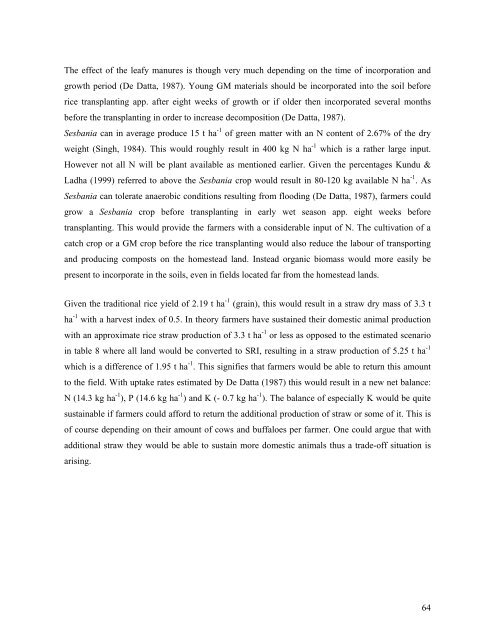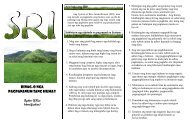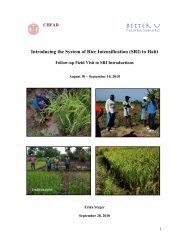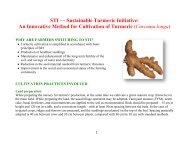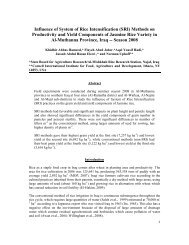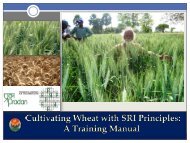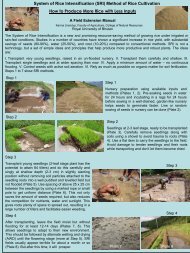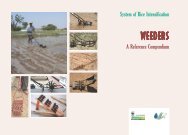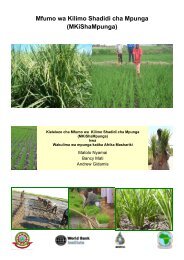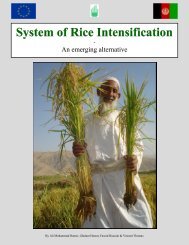EFFECT OF THE SYSTEM OF RICE INTENSIFICATION (SRI) ON ...
EFFECT OF THE SYSTEM OF RICE INTENSIFICATION (SRI) ON ...
EFFECT OF THE SYSTEM OF RICE INTENSIFICATION (SRI) ON ...
You also want an ePaper? Increase the reach of your titles
YUMPU automatically turns print PDFs into web optimized ePapers that Google loves.
The effect of the leafy manures is though very much depending on the time of incorporation and<br />
growth period (De Datta, 1987). Young GM materials should be incorporated into the soil before<br />
rice transplanting app. after eight weeks of growth or if older then incorporated several months<br />
before the transplanting in order to increase decomposition (De Datta, 1987).<br />
Sesbania can in average produce 15 t ha -1 of green matter with an N content of 2.67% of the dry<br />
weight (Singh, 1984). This would roughly result in 400 kg N ha -1 which is a rather large input.<br />
However not all N will be plant available as mentioned earlier. Given the percentages Kundu &<br />
Ladha (1999) referred to above the Sesbania crop would result in 80-120 kg available N ha -1 . As<br />
Sesbania can tolerate anaerobic conditions resulting from flooding (De Datta, 1987), farmers could<br />
grow a Sesbania crop before transplanting in early wet season app. eight weeks before<br />
transplanting. This would provide the farmers with a considerable input of N. The cultivation of a<br />
catch crop or a GM crop before the rice transplanting would also reduce the labour of transporting<br />
and producing composts on the homestead land. Instead organic biomass would more easily be<br />
present to incorporate in the soils, even in fields located far from the homestead lands.<br />
Given the traditional rice yield of 2.19 t ha -1 (grain), this would result in a straw dry mass of 3.3 t<br />
ha -1 with a harvest index of 0.5. In theory farmers have sustained their domestic animal production<br />
with an approximate rice straw production of 3.3 t ha -1 or less as opposed to the estimated scenario<br />
in table 8 where all land would be converted to <strong>SRI</strong>, resulting in a straw production of 5.25 t ha -1<br />
which is a difference of 1.95 t ha -1 . This signifies that farmers would be able to return this amount<br />
to the field. With uptake rates estimated by De Datta (1987) this would result in a new net balance:<br />
N (14.3 kg ha -1 ), P (14.6 kg ha -1 ) and K (- 0.7 kg ha -1 ). The balance of especially K would be quite<br />
sustainable if farmers could afford to return the additional production of straw or some of it. This is<br />
of course depending on their amount of cows and buffaloes per farmer. One could argue that with<br />
additional straw they would be able to sustain more domestic animals thus a trade-off situation is<br />
arising.<br />
64


